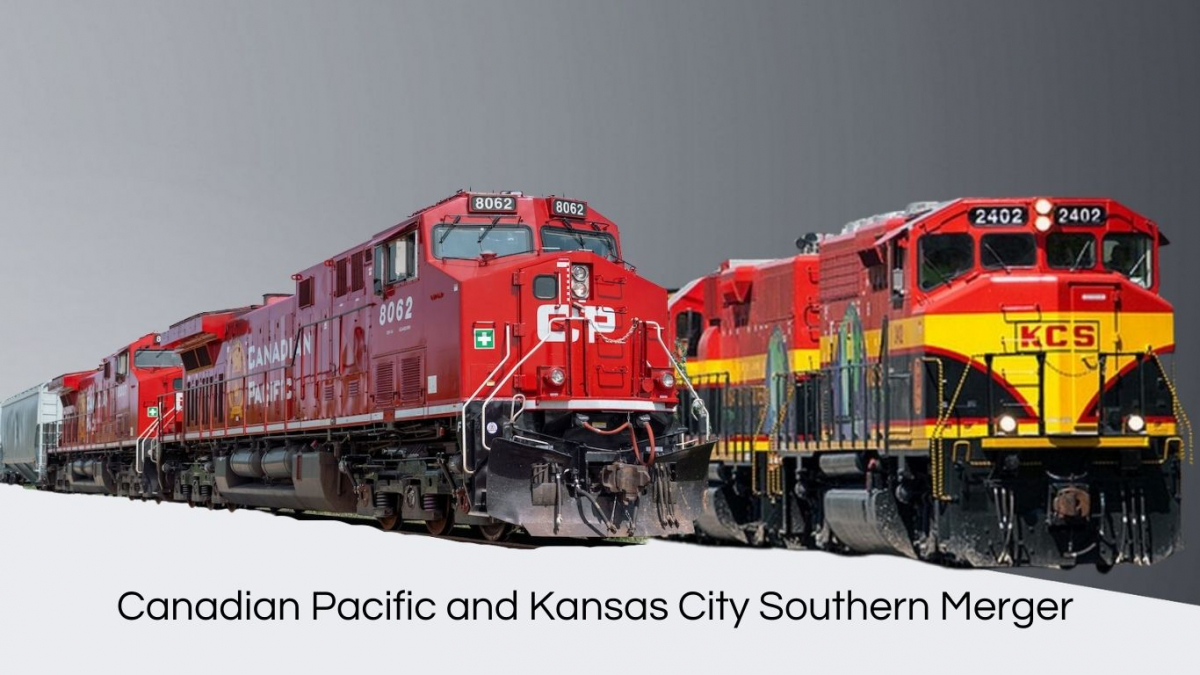On March 15, 2023, the Surface Transportation Board (STB) announced that they have approved a merger between Canadian Pacific Railway (CPRS) and Kansas City Southern (KCS). This is the first Class I Railroad merger since 1999 Conrail split up between NS and CSXT. The merger will create the first rail network that connects Canada, the United States, and Mexico. The new railroad will serve a wide range of customers, including the automotive, agricultural, and energy industries. It is expected that this new railroad will increase competition among other railroads and trucking, as it will provide new options for current rail shippers.
A short history of the merger
The merger between CPRS and KCS has been in the works since March 2021, when CPRS announced that they had entered into an agreement to acquire KCS. Soon after, a battle ensued between CPRS and Canadian National Railway (CN), their main competitor. At first, CN was able to sidestep CPRS by offering an even larger acquisition price compared to CPRS. But a key loss at the regulatory level at the Surface Transportation Board meant that CN was now on its back footing. The STB had ruled that CN-KCS merger would need to meet a higher regulatory burden than that of a CPRS-KCS merger. This higher regulatory burden is commonly referred to as “new merger rules”. These rules make it harder for railroads to get regulatory approval by requiring that the merger increase competition, instead of just maintaining current competition. These tougher merger rules were approved by the STB in 2001 in response to the service problems caused for many years by the mergers from the mid to late 1990s. But the new rules have never been tested, and as such, this presented heightened regulatory risks for KCS shareholders. So, KCS opted to go back to their CPRS merger option, but now at a higher price than was initially offered.
Since then, CPRS and KCS have been working to address concerns from regulators and other stakeholders. Most industry insiders and observers expected the merger to be approved by the STB. Primarily because the two rail networks are end-to-end, which means they do not have much overlap. They are also two of the smallest Class I Railroads. With the completion of this merger, the history of big railroad mergers has likely come to an end. Any further mergers by Class I railroads will have to show that they are in the public interest and that they promote or increase competition. It is hard to see how any further big railroad mergers would increase competition, but time will tell.
Are there any conditions applied to the merger?
Yes, the STB’s merger approval decision includes several requirements to protect competition. These conditions include implementing a seven-year oversight period with data-reporting requirements and a requirement to keep current gateways open on reasonable terms. The merged railroad will also have to justify rate increases above a certain level upon customers' request.
What are some of the benefits of the merger between Canadian Pacific and Kansas City Southern?
The new railroad dubbed Canadian Pacific Kansas City (CPKC) is expected to generate significant cost savings and operating efficiencies for the carrier. It will provide a seamless and efficient transportation option for shippers. The new network is the first single-line connection between shippers in North America, including the US, Mexico, and Canada. The CPKC expects that this merger will increase competition in the rail industry overall, which could lead to improved service and lower prices for shippers.
Specific Benefits to Shippers: The combined company will be able to provide single-line faster service for a wide range of products moving between Mexico, Canada, and the US, including automotive, agricultural, and energy products. It is expected to provide truck-competitive Intermodal shipping times and prices, which will enhance the transportation options for shippers. The new railroad will be able to provide direct service for the lucrative shipments of crude oil going south of Kansas City, particularly to Texas and Louisiana. And US Midwest and Canadian Prairies grain shipments will also have a direct option to ports in the Gulf and potential new markets in Mexico.
Specific Benefits to the Communities: The Canadian Pacific and Kansas City Southern merged railroad is expected to create jobs and economic growth in the communities the new network will touch. The combined company is expected to employ over 20,000 people and generate $8.7 billion in annual revenue. Additionally, the new carrier has promised to increase investment in rail infrastructure, which could benefit shippers as well as communities along the new network.
What are some of the concerns about this merger?
Various stakeholders have brought up important concerns for the STB to consider during the merger regulatory approval process. The Justice Department has warned that the deal could reduce incentives to invest in and implement new technologies and make industrywide agreements like fuel-surcharge programs harder to address. The Federal Maritime Commission was opposed to the merger, citing that ports and intermodal railway systems in Canada will disproportionately benefit at the expense of their U.S. counterparts from the transport of U.S.-bound cargo. Shippers have expressed concern about reduced competition, or monopolistic behavior by the newly combined railroad.
In conclusion, the Canadian Pacific and Kansas City Southern merger will create a more integrated and efficient rail network that serves customers across North America. While there are concerns about competition and pricing, the STB's decision in favor of the merger suggests that the potential benefits of the merger outweigh the risks. The next few years will give the marketplace an opportunity to judge the results.


